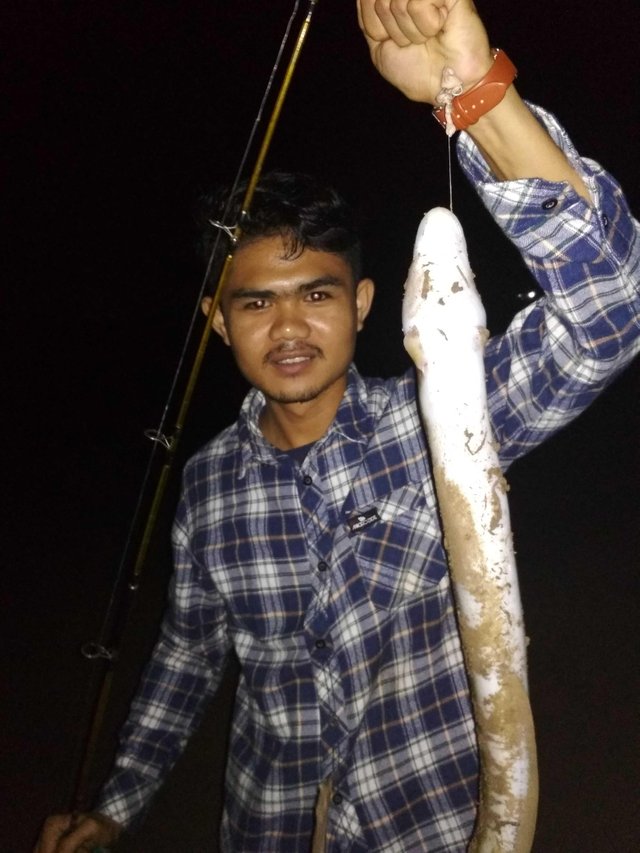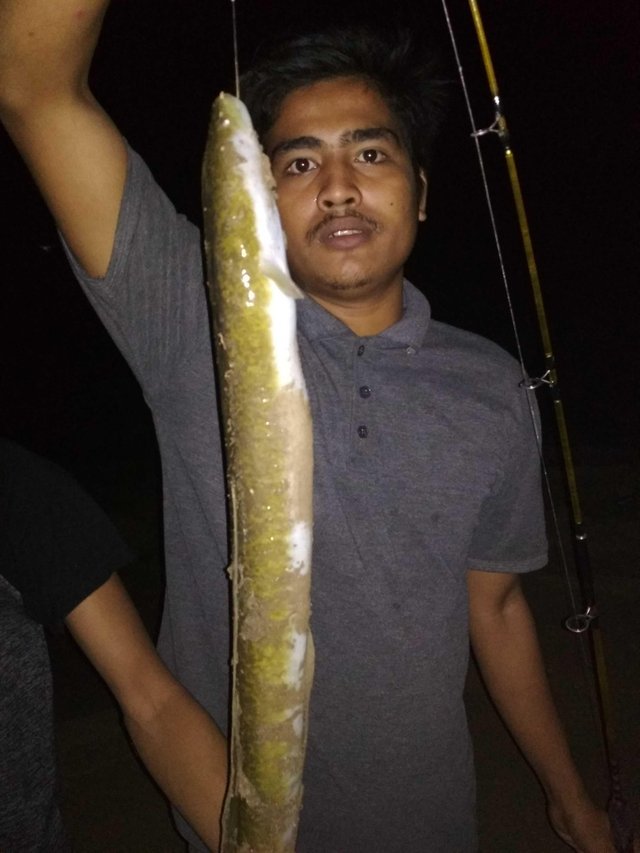Sidat Fish, Tough Carnivores that Spawn to the Sea

Saplings have unique habitat characteristics, being able to adapt in bargaining, estuary and sea stories. A glance eel is similar to eel. However, when viewed closely, the fish called latin Anguilla spp is different from the eel.
The body of the cylindrical eel fish, the contents of oval, the location of the terminal mouth, and has a tapered flat tail. Maximum body length of this fish varies between 15-200 cm and can weigh up to 22 kg depending on the type. His body is very flexible and coated with a kind of mucus that serves as a self-defense from natural predators.
Fish that is active at night (nocturnal) is classified as carnivorous fish species. Based on the research, this animal will be translated fish and other aquatic animals smaller than its mouth opening, especially benthic organisms such as shrimp and crabs (crustaceans), worms and chironomide larvae (polichaeta), shellfish (bivalva) and mollusca. Sometimes eels also like to prey on others. The animal will tear apart until its carcass is destroyed and a little bit by little.
In the life cycle this fish contains six phases, namely eggs, pre-leptocephalus, leptocephalus, glass eel, adult and parent. Sidat has a cadadromous nature, which lives in the hard and at the time will spawn (reproduce) eels migrate very far to the middle of the sea. This property is the opposite of the nature of salmon being anadromus, which is living in the sea and migrate deep into the upper streams very clear to spawn. The marking study shows whether eels can swim more than 3,000 miles (4,800 km) to the Sargasso Sea.
It takes a long time for eel to reach the high seas. To reach the mouth of the river, eels should be able to follow the river flow is very heavy. They also have to descend a very high waterfall. After arriving at the mouth of the river, eels must attach very large waves to arrive in the middle of the sea and must adapt to changes in salt content.
Along with low demand in the domestic and import markets, eels have been cultivated for having a very high commercial. Some countries such as Japan, Taiwan, China and European countries are the countries of interest of eel commodities.
Started Threatened
There are 18 species of eel in the world, including 12 species spread in the tropics, 7 species in the Western Pacific and Indonesia's voice. Even the honorable Indonesian voice is the origin (ancestor) of eels in the world, namely Anguilla borneensis. Thus is another species of eel in Indonesia, such as Anguilla selebesensis (Kalimantan and Sulawesi endemic eel); Anguilla interioris, Anguilla obscura (Papua), Anguilla marmorata, Anguilla bicolor bicolor, and Anguilla bicolor pacifica.
A. marmorata is a type of eel that is still often found in the mouth of Poso, Central Sulawesi. In the IUCN Red List (International Union for Conservation of Nature), A. marmorata species are low-risk (Least Concern). Depending on the type of A. celebensis that is categorized as Near Threatened. The threat tendency related to the pattern of eel catching, which does not pay attention to sustainability aspect can come at any time.
The caught traps are usually the adults who will spawn into the sea, consequently the number of adult eel migrating to the sea is very limited. The use of toxins, electrofishing and fishing gear traps from bamboo that block the path of eel migration to reproduce feared would interfere with eel live. The use of fishing gear will also kill the surrounding biota such as small fish, crabs, snails, frogs and other biota into eel food.
However, this is something bigger already in sight, namely the construction of hydroelectric power plant (PLTA) in Sulewana, North Pamona District by utilizing the flow of Poso River. According to Dr. Anugerah Nontji, Sulewana hydropower plant began to operate in 2016 and can supply 65 megawatts of electricity for Central Sulawesi. The existence of Sulewana hydro power plant in Poso River will become the route of eel transfer (Anguilla marmorata) which is one of the pride of Tentena community.

Judging from the potential threat of eel population decline and conflict of interest, then there is gun value of local wisdom can be revived in an effort to conserve and management of eel fishery in sustainability.